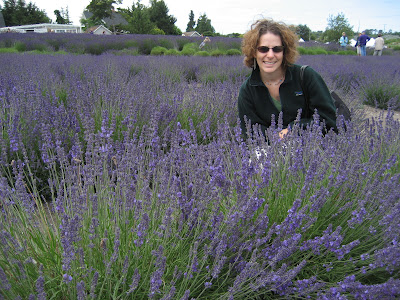
This morning I attended a very unusual concert. The group, Cappella Pratensis, is a unique early music vocal group in that they only perform from original music notation in choirbook format. This essentially means that rather than each singer standing with his or her individual copy of music, the singers gather around a large stand that holds one large book containing each voice part, separated from the others, on the same page.
This performance was fascinating to me on several different levels. First of all, it is an entirely authentic method of singing. In the tradition of Renaissance cathedral singing, singers would group around one single copy of music, a choirbook. This choirbook was generally large and oftentimes ornate; many of them were written or, later, printed and given to royalty, wealthy patrons, etc. as gifts. As all surviving choirbooks are preserved in museums and archives the performance today was from large-scale photocopies of choirbook music.
Perhaps the more interesting aspect of the concert today was not the novelty of watching the group but the implications singing in this way has for both the individual and the ensemble. Singers today are trained to read from a full score containing all the voice parts. As a soprano, for instance, I am constantly looking to other voice parts to, initially, help me get my first pitch or, as I learn the music, for indications regarding musical phrasing, texture, and style. The challenge for singers in a group like Cappella Pratensis is that it is impossible to look at the other parts. The whole concept of ensemble changes from a division between visual and aural to a purely aural technique. Tuning, phrasing, balance, nearly everything is transformed for the individual. I found the results in Cappella Pratensis's performance to be extremely vibrant and exciting.
Let me give you a sense of how this kind of performing is technically done. The leader of this particular group, Stratton Bull, stands on the edge of the group, singing and semi-conducting This in itself is rather strange because, unless he knows all the parts by heart, he is essentially only able to keep the pulse, conduct his own line or perhaps the lines of another part when he himself is resting. The singers appear to be grouped by height with the shorter ones in front, looking up towards the music, and the taller ones in back, looking over the heads of those in front. For the most part, everyone looks at the music ALL THE TIME, perhaps never daring to take their eyes off the page and risk losing their spot. Sometimes the singers need to crane their necks, straining to look at the music when the page is turned. While visually the performance is quite unique, I found that what I heard was also very engaging. The ensemble was for the most part very tight, though a bass confessed afterwards that he was ahead by one pulse for a substantial portion of the first piece. There were little tuning adjustments here and there, which is understandable and, I imagine, very authentic.
What I found most illuminating about the experience, though, were the philosophical questions raised by it. The director believes that this is the best way to sing Renaissance polyphony. My friend, M, who came down for the weekend from York to participate in a workshop based on singing in this fashion, is not too convinced. As for me I tend to agree with M: singing from full score has its advantages beyond "getting the right note". Perhaps it is the conductor in me, but there is something thrilling about seeing the entire piece laid out in front of me the way a composer must have conceived it in his mind. For as soon as it was technically and economically feasible composers DID start writing choral music this way.
But I also agree with M on another very important point. It is not always necessary to be historically correct when singing early music. Our performance should evolve the way compositional practice did, and there shouldn't be any hard and fast rules. But this is another soapbox for another time.
(And if I lost you along the way, welcome back, and I'll see you at my next entry!)

No comments:
Post a Comment